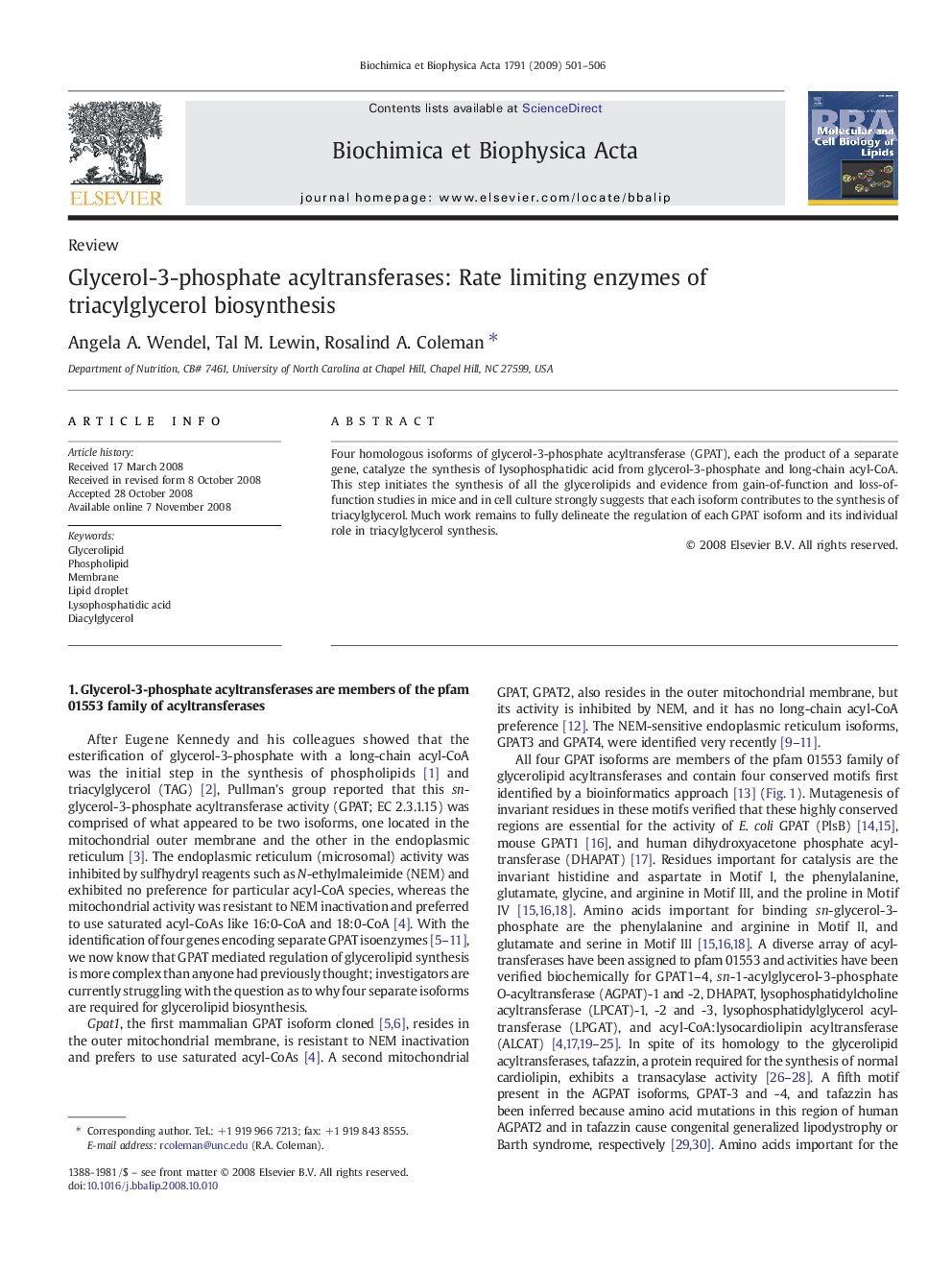| Article ID | Journal | Published Year | Pages | File Type |
|---|---|---|---|---|
| 1949936 | Biochimica et Biophysica Acta (BBA) - Molecular and Cell Biology of Lipids | 2009 | 6 Pages |
Abstract
Four homologous isoforms of glycerol-3-phosphate acyltransferase (GPAT), each the product of a separate gene, catalyze the synthesis of lysophosphatidic acid from glycerol-3-phosphate and long-chain acyl-CoA. This step initiates the synthesis of all the glycerolipids and evidence from gain-of-function and loss-of-function studies in mice and in cell culture strongly suggests that each isoform contributes to the synthesis of triacylglycerol. Much work remains to fully delineate the regulation of each GPAT isoform and its individual role in triacylglycerol synthesis.
Related Topics
Life Sciences
Biochemistry, Genetics and Molecular Biology
Biochemistry
Authors
Angela A. Wendel, Tal M. Lewin, Rosalind A. Coleman,
